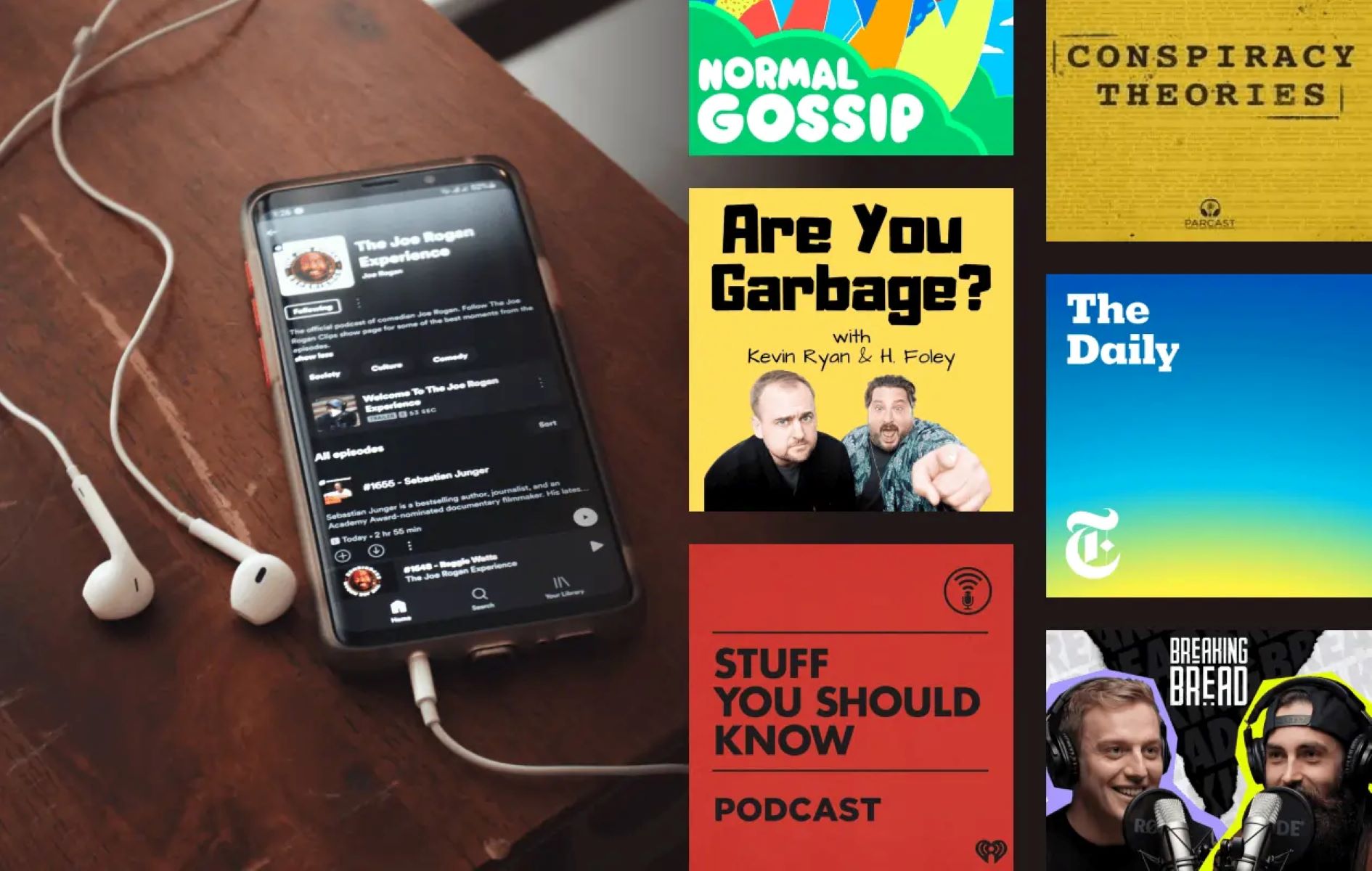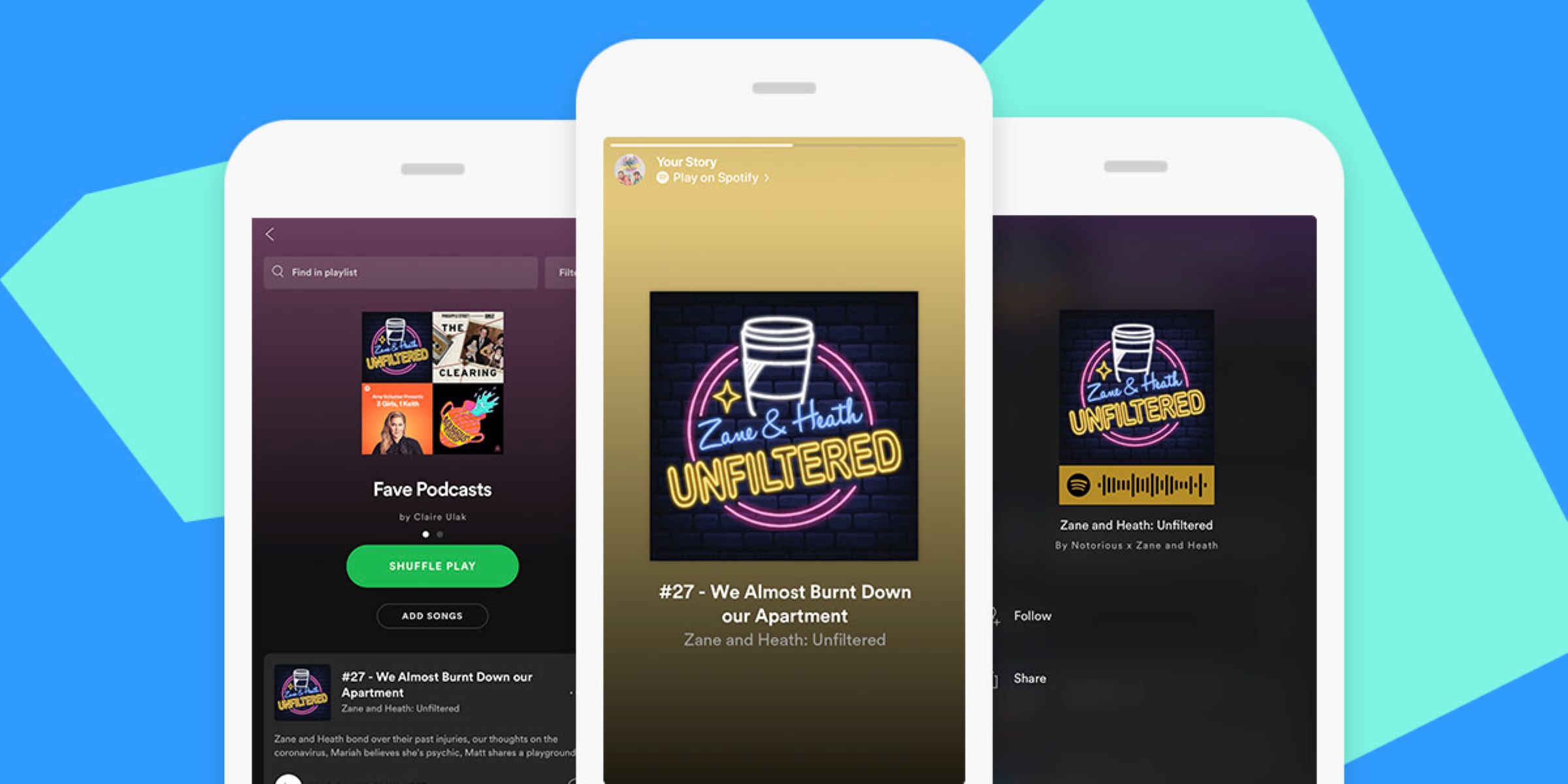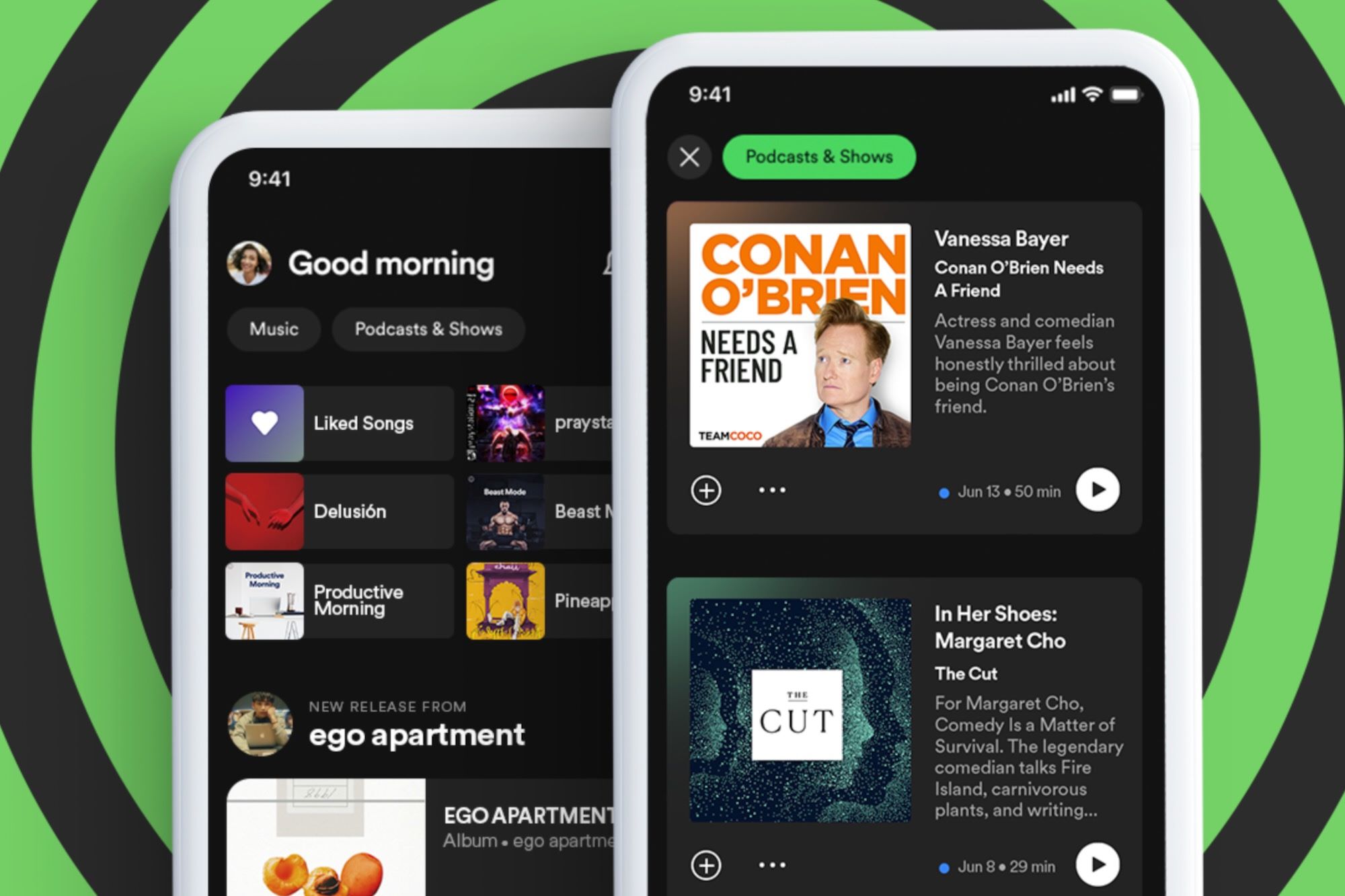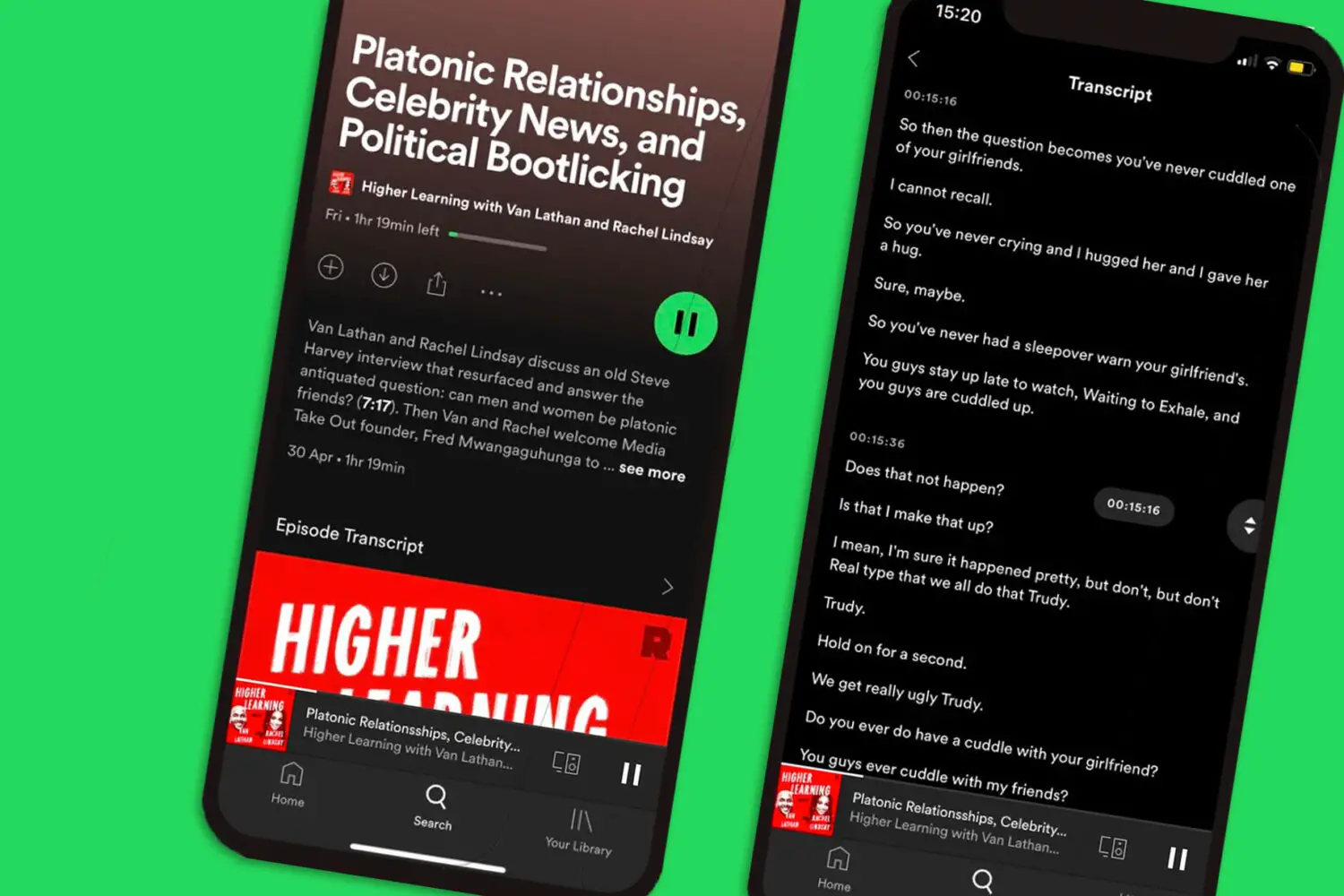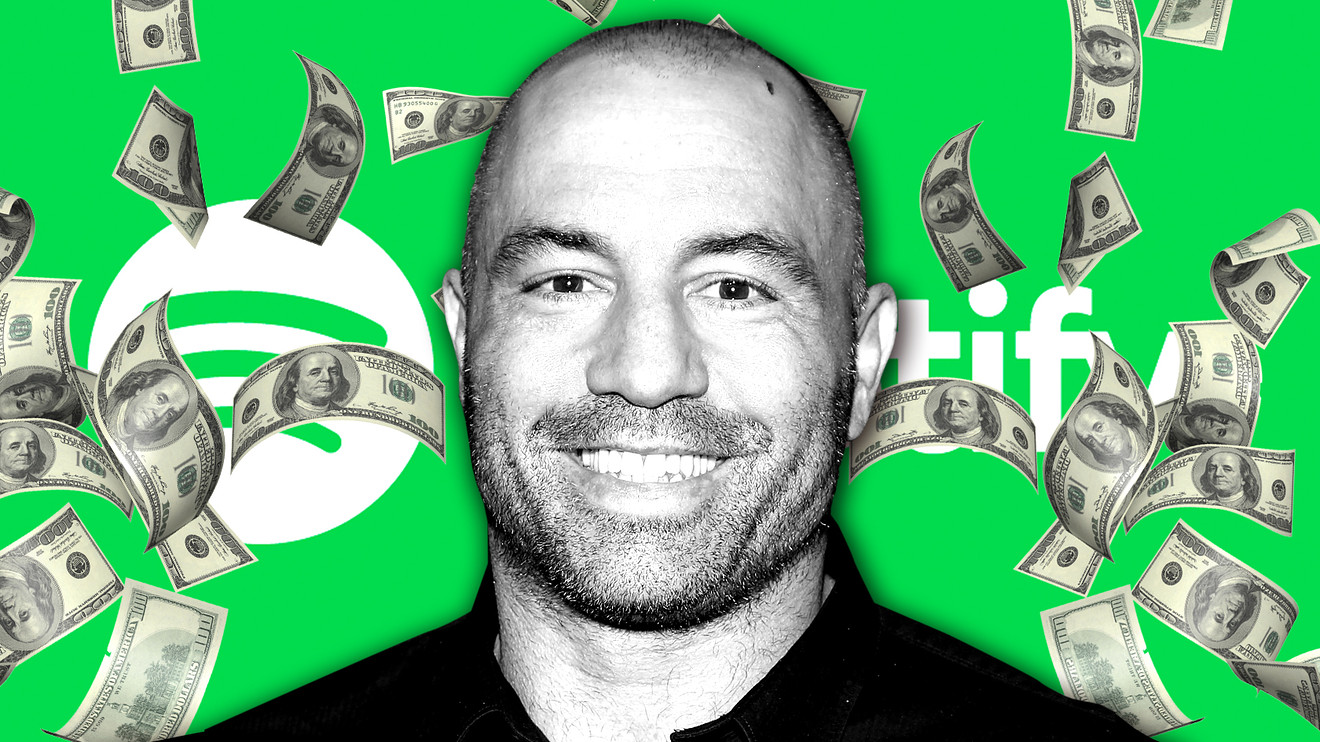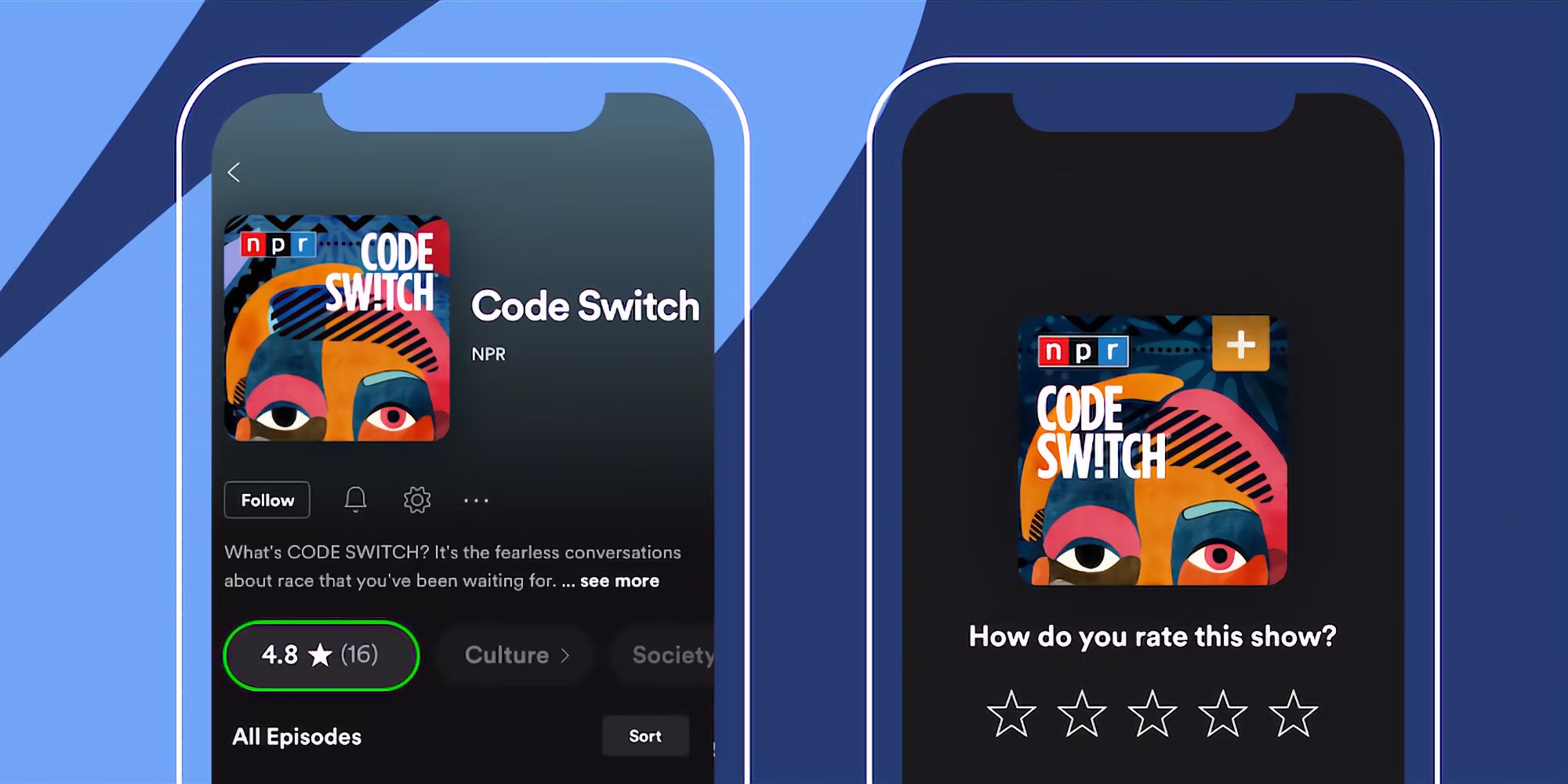Introduction
Podcasts have gained immense popularity in recent years, providing a platform for individuals and businesses to share their thoughts, knowledge, and stories with a wide audience. If you’re interested in creating your own podcast and distributing it on Spotify, one of the leading podcast platforms, you’ve come to the right place.
In this guide, we will take you through the step-by-step process of making a podcast on Spotify. We’ll cover everything from planning and creating content to recording, editing, uploading, and promoting your podcast. By following these steps, you’ll be well on your way to reaching a global audience and sharing your unique voice with the world.
Before we dive into the specific steps, it’s important to note that creating a podcast requires dedication, creativity, and a genuine passion for your chosen topic. Whether you want to entertain, educate, or inspire, your podcast should offer value to your listeners and keep them coming back for more.
Additionally, while Spotify is one of the most popular platforms for hosting and distributing podcasts, it’s not the only one. There are various other platforms you may also want to consider, such as Apple Podcasts, Google Podcasts, and Stitcher, to name a few. However, for the purpose of this guide, we’ll focus on Spotify as it boasts a massive user base and provides excellent opportunities for podcasters.
Now that we have set the stage, let’s jump into the first step: planning your podcast. This crucial stage will help you define your goals, target audience, and overall concept for your podcast, laying the foundation for a successful and engaging series.
Step 1: Planning Your Podcast
Before you start recording and publishing episodes, it’s important to spend some time planning your podcast. This step will help you clarify your podcast’s purpose, identify your target audience, and outline the overall structure and format.
The first thing you need to do is define the topic or theme of your podcast. Think about your interests, expertise, and what you’re passionate about. Consider what kind of information or entertainment you can provide that would be valuable to your potential listeners.
Once you have a clear topic in mind, it’s time to narrow it down further. Identify your target audience – the group of people who would be most interested in your content. Understanding your audience’s demographics, interests, and preferences will help you tailor your podcast to their needs.
Next, consider the format of your podcast. Will it be a solo show where you share your thoughts and experiences? Or will you invite guests to join you for interviews or discussions? You could also explore the possibility of co-hosting with someone who shares your interests and expertise.
Creating an outline for your podcast episodes is also essential. This will serve as a roadmap for each episode, helping you stay organized and focused during recording. Include key points, subtopics, and any guest questions or talking points you want to cover.
As you plan, think about the frequency and length of your episodes. How often will you release new episodes? Will they be shorter, bite-sized episodes or longer, in-depth discussions? Consider what will work best for your content and audience.
Lastly, brainstorm some potential episode ideas. Create a list of topics or themes that you can explore in your podcast. Having a backlog of episode ideas will ensure that you always have content ready to go, even when you’re facing writer’s block or a creative lull.
Remember, planning is crucial for a successful podcast. It helps you stay organized, ensures consistency in your content, and keeps your audience engaged. Once you have a solid plan in place, you can move on to the next step: gathering the necessary equipment and software for recording.
Step 2: Gathering Equipment and Software
Now that you have a clear plan for your podcast, it’s time to gather the necessary equipment and software to bring your ideas to life. While you don’t need to break the bank, investing in decent quality equipment will significantly improve the overall sound quality of your podcast.
First and foremost, you’ll need a good microphone. A USB microphone is a popular choice for beginner podcasters, as it offers a simple plug-and-play setup. Look for a microphone that captures clear and crisp audio without picking up too much background noise.
In addition to a microphone, you’ll also need headphones. Look for a comfortable pair that provides accurate sound reproduction, allowing you to listen to your recordings and make adjustments as necessary.
While not essential, a microphone stand or boom arm can be useful for keeping your microphone stable and at the appropriate distance from your mouth. This will help prevent any unnecessary noise or distortions in your audio.
Next, you’ll need recording and editing software. Audacity is a popular free option that provides all the basic tools you’ll need to record and edit your podcast. If you’re looking for more advanced features, you might consider investing in software like Adobe Audition or GarageBand (for Mac users).
When it comes to recording your podcast, it’s important to choose a quiet location with minimal background noise. Consider using sound-absorbing materials like foam panels or blankets to reduce echo and improve the overall sound quality.
In addition to the hardware and software, you’ll also need a reliable internet connection for uploading your podcast episodes to Spotify. Make sure your internet speed is fast enough to handle large file transfers without any issues.
Lastly, consider creating a dedicated space for podcasting. This can be as simple as a desk or table with your equipment set up, or even a small recording booth if you have the resources. Having a dedicated space will help you minimize distractions and create a professional atmosphere for your recordings.
With your equipment and software in place, you’re ready to move on to the next step: creating content for your podcast. This is where you’ll start shaping your episodes and bringing your ideas to life.
Step 3: Creating Content for Your Podcast
Now that you have all the necessary equipment and software, it’s time to dive into the creative process of creating compelling content for your podcast. This step is crucial as it determines the value and engagement your podcast will offer to your audience.
Start by brainstorming the topics and themes you want to cover in your podcast. Think about what will resonate with your target audience and align with your podcast’s overall purpose. Consider doing research and staying updated on industry trends to ensure you provide relevant and up-to-date content.
As you plan your episodes, consider incorporating different formats and styles to keep your podcast interesting and diverse. You can have solo episodes where you share your thoughts and expertise, interview guests who bring unique perspectives, or even include roundtable discussions with multiple participants for lively debates.
When preparing for each episode, create a script or at least a detailed outline to guide your content. This will help you stay focused and organized during recording and ensure you cover all the important points you want to convey. However, don’t be afraid to inject spontaneity and natural conversation flow to make your podcast more engaging.
In addition to the main content, consider adding segments to your podcast. These can be recurring features or special segments that provide additional value and entertainment. Examples include Q&A sessions, listener stories, expert insights, or even a “rant of the week” segment.
While planning your content, remember to keep your episodes at a reasonable length. Most podcasts range from 20 to 60 minutes, depending on the topic and format. Consider your audience’s preferences and attention span when deciding on the duration of each episode.
Another important aspect of creating content for your podcast is maintaining a consistent schedule. Decide on a release frequency that you can commit to, whether it’s weekly, bi-weekly, or monthly. Consistency helps build anticipation among your audience and keeps them engaged.
Lastly, don’t be afraid to experiment and evolve your content as you gain experience. Pay attention to listener feedback and adapt accordingly. Taking risks and trying new things will keep your podcast fresh and exciting.
Once you have all your content planned, it’s time to move on to the next step: recording your podcast. In the following section, we’ll explore the best practices for achieving high-quality audio recordings.
Step 4: Recording Your Podcast
Now that you have your content planned, it’s time to start recording your podcast. The quality of your audio plays a crucial role in engaging your audience, so it’s important to pay attention to the recording process.
Before you start recording, make sure you’re in a quiet environment with minimal background noise. Close windows, silence phones, and let people around you know that you’ll be recording to avoid interruptions. Consider using a pop filter to minimize plosive sounds when speaking into the microphone.
When it comes to recording, there are a few tips to keep in mind. First, speak clearly and at a consistent volume throughout your episode. Avoid mumbling or speaking too softly, as it can make it difficult for listeners to understand you. At the same time, be mindful of not speaking too loudly and causing distortion in the audio.
It’s essential to maintain a relaxed and natural speaking pace. Avoid rushing through your words or speaking too slowly, as it can affect the flow and engagement of your podcast. Practice speaking at a comfortable pace beforehand to develop a smooth and natural delivery.
Remember to take breaks when needed. Pausing between sentences or segments allows for easier editing during the post-production process. It also provides your listeners with moments to digest the information or prepare for any transitions you might have.
As you record, keep an eye on your audio levels. Ideally, your recording should have a healthy signal without clipping or distortion. Monitor your microphone input levels to ensure they stay in the optimal range. Adjust the input gain on your microphone or audio interface to achieve the right balance.
When recording with guests, conduct audio tests before starting the actual episode. Ensure that everyone’s audio sounds clear and balanced. Each participant should have their own microphone to maintain consistent audio quality.
If you make mistakes or stumble during recording, don’t worry. It’s natural to make errors, and they can be easily fixed during the editing process. Take a pause, gather your thoughts, and start that section again. Remember, editing is your friend, so don’t be too hard on yourself.
Once you’re satisfied with your recording, make sure to save the files in a lossless format, such as WAV or AIFF. This will preserve the audio quality and give you the best starting point for editing.
Now that you’ve successfully recorded your podcast, it’s time to move on to the next step: editing. In the following section, we’ll explore the process of refining your podcast episodes to create a polished and professional final product.
Step 5: Editing Your Podcast
Editing your podcast is a crucial step in refining the quality and flow of your audio. It’s during this process that you can remove any mistakes, add music or sound effects, and create a polished final product that will captivate your listeners.
Start by importing your recorded audio files into your chosen audio editing software. Audacity, Adobe Audition, and GarageBand are popular options for podcast editing. Familiarize yourself with the features and tools available in your chosen software to streamline the editing process.
Begin by listening through your recording from start to finish. While doing so, take note of any areas that need improvements, such as long pauses, stumbles, or background noises. Use your editing software’s cutting tools to remove those unwanted sections, ensuring a smoother listening experience.
You may want to enhance the overall audio quality by adjusting the volume levels. Use the volume automation feature to balance the loud and soft parts of your recording. Pay attention to maintaining consistent audio levels, allowing your listeners to enjoy a seamless listening experience.
If there are any noticeable gaps between your speech or segments, consider tightening them up by using your editing software’s tools, such as the “silence remover” or the ability to cut and paste sections accordingly. This will help maintain the pacing and flow of your podcast.
Adding background music or sound effects can help create a professional and engaging atmosphere for your podcast. Choose royalty-free or licensed music that complements your content, and make sure it doesn’t overpower your voice. Use your editing software to adjust the volume levels of the music to create a balanced blend with your narration.
In addition to music, consider adding transitions between segments or episodes. These can be simple fade-ins and fade-outs or more complex sound effects. Transitions help create a cohesive listening experience and keep your audience engaged.
Once you’re satisfied with the overall structure and flow of your podcast, take a final listen to the entire episode to catch any last-minute errors or issues. Pay attention to the pacing, audio quality, and consistency of your content. Make adjustments as necessary to deliver a polished final product.
Export your edited podcast episode as an MP3 or other preferred audio format. This compressed version will reduce the file size while maintaining good audio quality. Remember to save a backup of the original edited file to ensure you can always make changes or corrections in the future, if necessary.
Congratulations! You have successfully edited your podcast episode. Now it’s time to move on to the next step: uploading your podcast to Spotify. In the next section, we’ll guide you through the process of getting your podcast live on this popular platform.
Step 6: Uploading Your Podcast to Spotify
Now that your podcast episode is edited and ready to be shared with the world, it’s time to upload it to Spotify. As one of the leading podcast platforms, Spotify provides a massive audience and excellent exposure for your podcast.
To begin, ensure that you have a Spotify account. If you don’t already have one, sign up for a free account or consider upgrading to a premium subscription for additional benefits. Having an account will allow you to access Spotify’s podcasting features.
Next, navigate to Spotify for Podcasters, a platform specifically designed for podcast creators. Sign in using your Spotify account credentials. If you haven’t claimed your podcast on Spotify yet, you’ll need to do so by providing your podcast’s RSS feed.
Once you’ve claimed your podcast, you’ll have the ability to add new episodes. In the Podcasters dashboard, click on “Add Episode” or a similar option, depending on the platform’s layout.
When adding a new episode, provide all the necessary details, including the episode title, description, and artwork. These elements will help your audience understand what the episode is about and entice them to listen.
Upload your edited podcast episode file to Spotify using the designated file upload tool. Ensure that the file meets the required specifications, such as the supported audio format and file size limitations.
Once your file is uploaded, preview your episode to confirm that it’s playing correctly and there are no issues with the audio or metadata. Make any necessary adjustments or edits if needed.
After verifying the accuracy of your episode, save and publish it on Spotify. The episode will go through a short processing period before becoming available to the public. During this time, Spotify will ensure your episode meets their content guidelines and quality standards.
While your podcast episode is being processed, it’s a good idea to promote it across your social media platforms, website, and email list. Share the episode’s Spotify link, teaser, or a compelling snippet to generate interest and encourage listeners to tune in.
Remember, uploading to Spotify is just one step in promoting your podcast. You should also consider submitting your podcast to other popular podcast directories, such as Apple Podcasts, Google Podcasts, and Stitcher, to reach a wider audience.
Congratulations! Your podcast episode is now live on Spotify. But the journey doesn’t end here. In the next step, we’ll explore effective strategies for promoting your podcast on Spotify to boost its visibility and attract more listeners.
Step 7: Promoting Your Podcast on Spotify
Once your podcast is live on Spotify, it’s time to focus on promoting it and attracting a larger audience. While Spotify provides a platform for discovery, implementing promotional strategies can help boost your podcast’s visibility and increase listenership.
Start by optimizing your podcast’s metadata on Spotify. Make sure your podcast title and description accurately represent your content and include relevant keywords that potential listeners might search for. This will improve discoverability within Spotify’s search algorithm.
Promote your podcast across your existing online presence. Leverage your website, blog, social media platforms, and email list to promote your podcast episodes. Share links, snippets, or teasers that entice your audience to listen and subscribe.
Collaborate with other podcasters and influencers in your niche. Seek opportunities for guest appearances on other podcasts or invite guests to appear on your own podcast. This cross-promotion can help you tap into new audiences and establish credibility within your industry.
Create engaging content related to your podcast on various platforms. Consider creating short video clips, quote cards, or blog posts that highlight interesting points or episodes from your podcast. Share these across social media platforms to pique interest and drive traffic to your podcast.
Engage with your audience on social media. Respond to comments, messages, and reviews, and encourage your listeners to share their feedback and suggestions. Building a sense of community around your podcast will create loyal fans who are more likely to recommend your show to others.
Consider running paid ads or sponsored content to reach a wider audience. Platforms like Spotify offer advertising options to promote your podcast and attract new listeners. Explore targeting options to ensure your ads reach your intended audience.
Participate in relevant podcast directories, forums, and communities. Find online communities or forums where your target audience hangs out, and engage in discussions related to your podcast’s topic. Be mindful not to spam or self-promote excessively, but rather provide value and insights to establish yourself as an authoritative voice.
Use your podcast guests as brand advocates. Encourage them to share their episode on their own social media platforms and networks. Their followers and fans who are interested in their expertise may discover your podcast through their promotion.
Regularly monitor the performance of your podcast on Spotify. Pay attention to listener feedback, engagement metrics, and the number of subscribers and downloads. This insight will help you identify what is resonating with your audience and adjust your content or promotional strategies accordingly.
In summary, promoting your podcast on Spotify requires a comprehensive approach that combines optimizing your podcast metadata, leveraging your existing online presence, collaborating with others, engaging with your audience, and exploring advertising options. Remember, consistency and a genuine passion for your podcast will go a long way in attracting and retaining a loyal listener base.
Step 8: Analyzing Your Podcast’s Performance on Spotify
As a podcaster, it’s essential to regularly analyze the performance of your podcast on Spotify. By understanding how your podcast is performing, you can make informed decisions to improve and grow your show. This final step in the process will help you gain valuable insights into your audience, engagement, and content effectiveness.
Start by utilizing the analytics and data provided by Spotify for Podcasters. Spotify offers various metrics such as the number of streams, unique listeners, episode downloads, and follower growth. This data will give you a clear picture of how your podcast is performing over time.
Identify patterns and trends within the analytics. Look for episodes that have higher engagement or more downloads and try to determine what made them successful. Analyze the topics, formats, and guests that resonate well with your audience, and consider incorporating more of those elements into future episodes.
Pay attention to listener demographics provided by Spotify. Understand the age range, gender distribution, and location of your listeners. This information can help you tailor your content and marketing strategies to better connect with your target audience.
Track the retention rate of your episodes. This metric reflects how well your audience is staying engaged throughout an episode. Identify any significant drop-off points and evaluate the content, pacing, or structure of those segments. Adjusting these elements can help improve listener retention.
Monitor listener feedback and reviews. Take note of any constructive criticism or suggestions provided by your listeners. Feedback can be a valuable source of insights and ideas for enhancing your podcast. Actively engage with your listeners and respond to their comments to cultivate a loyal community.
Utilize social media and website analytics to complement your Spotify data. Monitor the traffic coming from Spotify and other platforms to understand the effectiveness of your promotional efforts. Tracking website visits, click-through rates, and engagement metrics will provide a comprehensive view of your podcast’s performance.
Experiment with different content formats or topics based on the data you’ve gathered. Use A/B testing to compare the performance of different episodes or promotional strategies. By experimenting and analyzing the results, you can fine-tune your podcast to appeal to your audience’s preferences.
Continue to refine your podcast based on the insights gained from analyzing its performance. Regularly review and adjust your content, promotional strategies, and engagement tactics to consistently deliver value to your listeners. A willingness to adapt and evolve will help you stay relevant in a dynamic podcasting landscape.
Remember that analyzing your podcast’s performance is an ongoing process. Make it a habit to review your analytics regularly and identify areas of improvement. By staying proactive in analyzing and optimizing your podcast, you’ll be well on your way to growing your audience and achieving podcasting success.
Conclusion
Congratulations! You have completed the eight crucial steps to making and promoting your podcast on Spotify. From planning your podcast to analyzing its performance, you’ve gained valuable insights and tools to create a successful show that resonates with your target audience.
By carefully planning your podcast’s concept, target audience, and content, you’ve set a strong foundation for its success. Gathering the right equipment and software has ensured that your podcast sounds professional and engaging to listeners.
The process of creating content, recording, and editing has allowed you to craft high-quality episodes that deliver valuable insights, entertainment, or education to your audience. Uploading your podcast to Spotify has given you access to a vast user base and the potential to reach new listeners.
Through promotion strategies like leveraging your online presence, collaborating with others, and engaging with your audience, you’ve taken steps to increase the visibility and discoverability of your podcast on Spotify.
Regularly analyzing your podcast’s performance has enabled you to fine-tune your content, understand your audience better, and make data-driven decisions to grow your show.
Remember, podcasting is a journey that requires consistency, creativity, and dedication. It’s important to continually evolve your podcast by experimenting with new ideas, incorporating listener feedback, and staying up-to-date with industry trends.
As you continue your podcasting journey on Spotify, always prioritize delivering value to your listeners and building a genuine connection with your audience. With passion, perseverance, and a commitment to continuous improvement, your podcast has the potential to make a lasting impact and attract a loyal following.
Now, armed with the knowledge and steps outlined in this guide, go forth and create a remarkable podcast on Spotify that captivates listeners, inspires conversations, and leaves a lasting impression on your growing audience.









